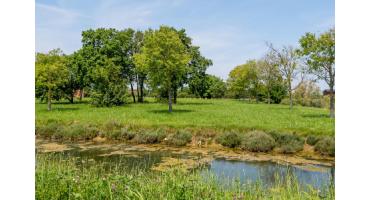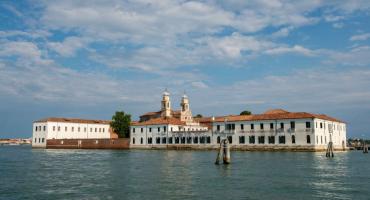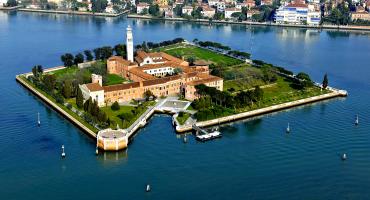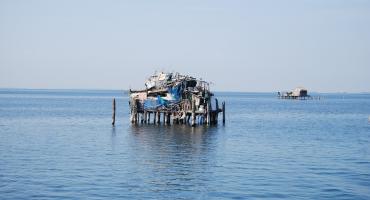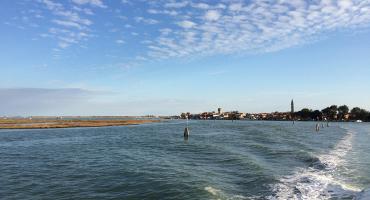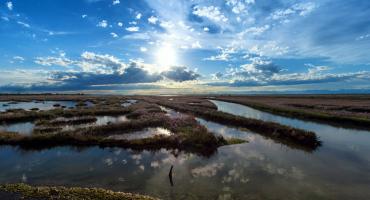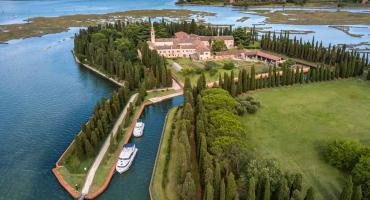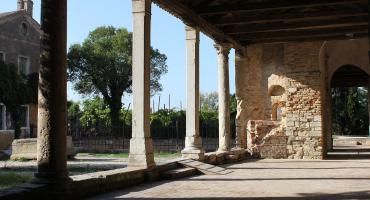A trip to discover the small islands of the Venetian Lagoon, scattered jewels in a wide expanse of shallow water between the lagoon and the sea.
Isola di San Servolo
San Servolo is an island located in the San Marco basin with a millennia-old history (the first settlement dates back to the end of the 600s). Today, thanks to the efforts of the Province of Venice, San Servolo boasts a vibrant contemporary history. The island now hosts an international university, a conference center, a museum, and a packed program of events ranging from art and photography to music, cinema, literature, and theater.
Isola della Certosa
Certosa is less than 250 meters from S. Pietro di Castello, just over 500 meters from the Lido, and near the islands of Vignole and Forte di Sant'Andrea. It owes its name to the Carthusian monks from Florence who settled there in 1424. After being abandoned for years, the island of Certosa is now an example of integrated restoration, thanks to EU funding, special law funds, and the Venice Municipality. The island now features a park, a nautical center called Vento di Venezia, and the recently established European Institute of Design.
Isola di Santa Cristina
Santa Cristina is located in the northern lagoon, north of Treporti. It is the largest of the 33 smaller islands of the Venetian lagoon. The island of Santa Cristina was historically known as San Marco. It is now privately owned.
Isola di Sant'Erasmo
Sant’Erasmo is located in the central-northern basin. Until the 1800s, it was a true lido facing the Adriatic Sea. With the construction of the dams at the port inlets, sediment deposits created the dune of Punta Sabbioni. The island, formerly known as Alba or Mercede, was described by Martial as a pleasant vacation area with fertile land and large pine forests. For centuries, and still partially today, it has served as the "garden" of Venice.
Isola di San Giacomo in Palude
San Giacomo in Palude is located in the central lagoon, northeast of Murano. Stable settlements from the early medieval period, if not earlier, have been confirmed by recent archaeological findings. In the summer of 1975, after a period of abandonment, the Venice Biennale used one of the military warehouses for decentralized theatrical performances.
Isola di Lazzaretto Nuovo
Lazzaretto Nuovo is located in the central lagoon. Its strategic position near S. Erasmo, then the main port inlet, made it crucial. Like Poveglia and S. Clemente, it was a station in Roman times of the Fossa Popilia, which connected Chioggia to Altino. The island's long and intense history includes its use as a quarantine station for suspected plague-infected people and goods starting in 1468. After a period of abandonment, the island was revitalized thanks to the Ekos Club Association and the Archeoclub of Venice.
Isola di Salina
Salina is located in the northern lagoon. It coincides with the central core of the ancient island of San Felice, one of the parishes that composed the Ammiana archipelago. The name Salina was introduced around the mid-19th century when the now-abandoned motte of San Felice was chosen as the site for a large sea salt production facility. The island is now privately owned.
Isola di Buel del Levo
Buel de Levo is located in the northern lagoon, west of Mazzorbo. Formerly known as battery Sali Marco, it is one of nine artificial posts installed in the late 18th century to defend the lagoon front. Today, the island is privately owned.
Isola di San Lazzaro degli Armeni
San Lazzaro degli Armeni is a small island in the southern lagoon, the motherhouse of the Mekhitarist Order. One of the first centers of Armenian culture in the world, it has a long tradition of hospitality. Lord Byron studied Armenian on the island in 1816 and is said to have loved the special Vartanush, a rose petal jam that the monks still produce from roses grown on the island.
Isola di San Francesco del Deserto
San Francesco del Deserto is located opposite Sant'Erasmo. An oasis of peace and mysticism, it is characterized by its unmistakable profile of cypress trees. The founding of the hermitage is traditionally linked to the stay of St. Francis of Assisi in the lagoon in 1220, returning from Egypt. However, there are still many doubts about the veracity of this fact and St. Francis's possible active role in creating the settlement. The name San Francesco del Deserto comes from the fact that, a couple of centuries after the Franciscan friars settled, the island's deterioration forced them to leave, only to return in 1453.
Isola delle Vignole
The island of Le Vignole, in the central lagoon, presents as a long, wedge-shaped sandy ridge between the ports of S. Erasmo and the Lido. Historically known as Biniola or “the seven vineyards,” it was one of the favored vacation spots for the inhabitants of Altino and later those of Venice. According to the poet Martial, the magnificence of its residences surpassed those of Pozzuoli.
Isola di Poveglia
Poveglia is an island in the southern lagoon, opposite Malamocco. Following the Lombard invasion in the 6th century and the destruction of Padua, Popilia became a resettlement center for fleeing populations. It was depopulated during the War of Chioggia to allow for the installation of defensive works. The island was abandoned during the last century and is currently undergoing restoration.
di :venews
aprile 2007

